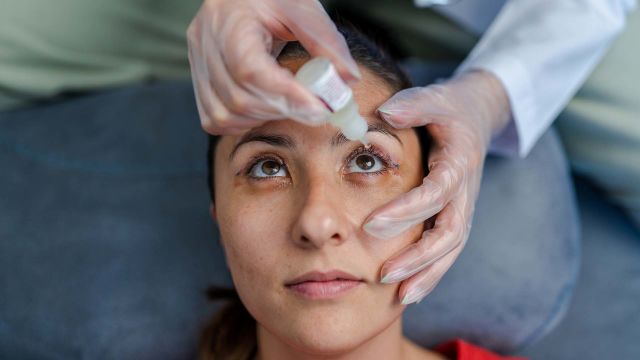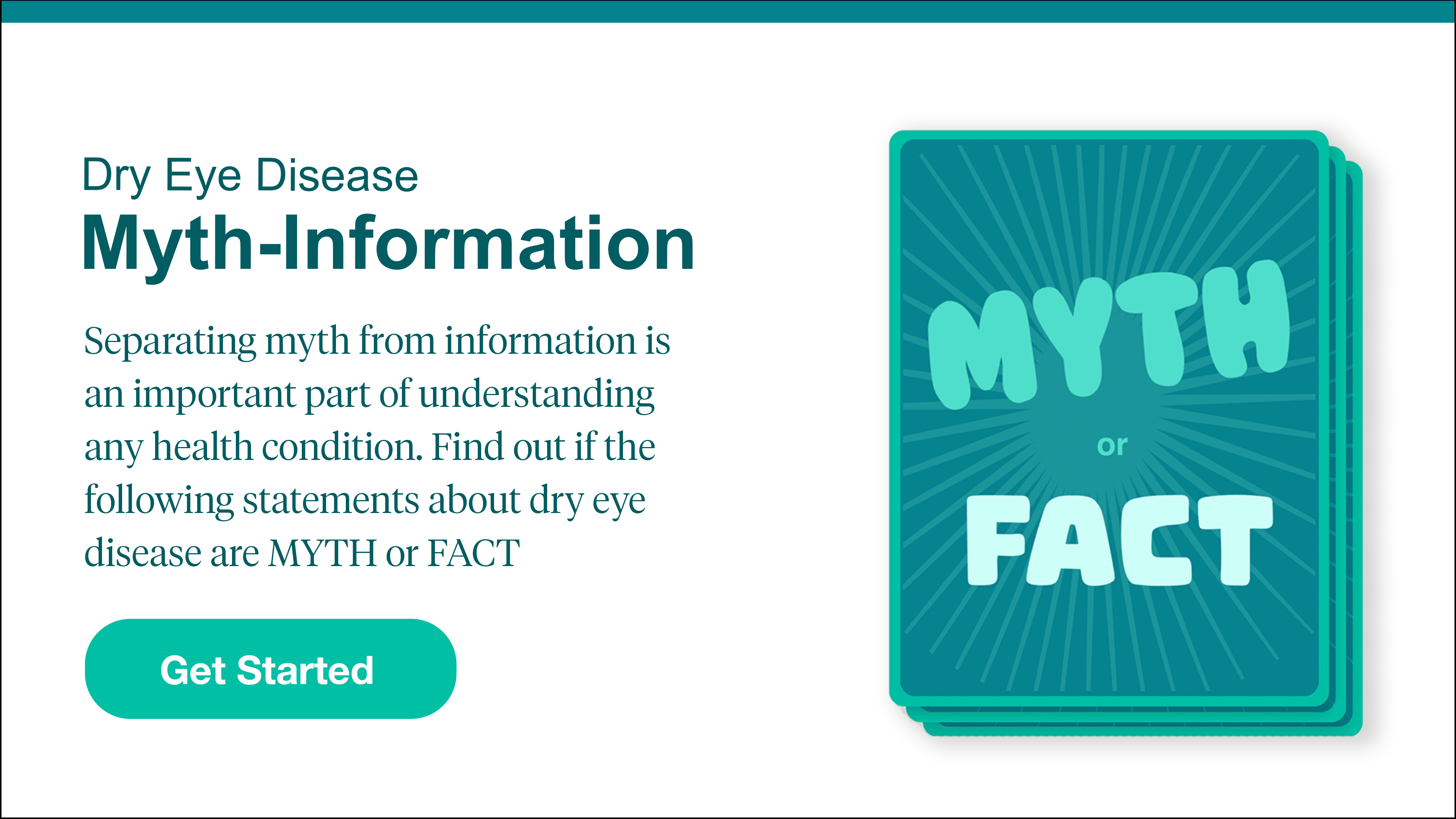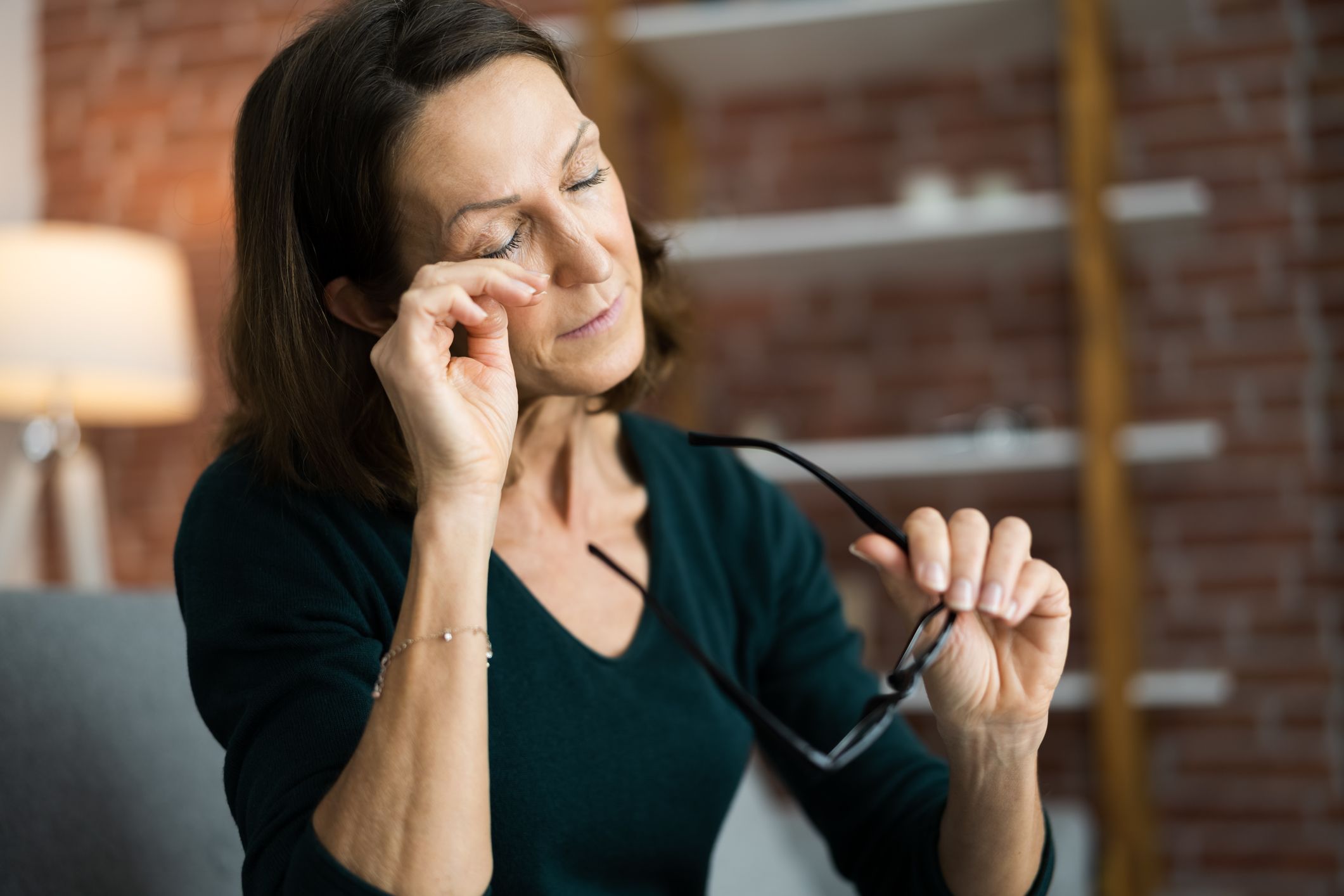Tears are important. They keep your eyes moist, smooth, and clear so you can see properly. They also protect your eyes from irritants like dust and dirt.
Dry eye disease (DED) is a condition where the body is unable to produce enough tears, or the tears that are produced dry up too quickly.
Symptoms of dry eye disease may include:
- Eye redness
- A burning or stinging sensation in the eyes
- Blurred vision
- Feeling like the eyes are scratchy or gritty
- Sensitivity to light
Dry eye disease can affect anyone. But it is most common in women over the age of 50, and it is more common in people with autoimmune diseases such as lupus or rheumatoid arthritis. Long-term use of contact lenses and laser surgery on the eyes are other risk factors. Exposure to dry air, wind, and smoke can also play a role.
If your eyes are too dry, it can cause damage to the surface of your eye. This can result in mild-to-severe vision impairments.
Some people with dry eye disease experience dry eye flares—episodes where symptoms quickly become worse.
What is a dry eye flare?
A dry eye flare is a sudden worsening of symptoms. These flares often occur in response to environmental triggers.
The same way allergies can be triggered by a high pollen count or a psoriasis flare can occur with too much sun exposure, dry eye flares can occur from exposure to dry air, wind, or smoke (to name a few potential triggers).
Sometimes the thing that triggers a flare may be obvious, but other times it may seem like a flare occurs for no reason. In some cases, flares are caused by inflammation.
Under normal circumstances, inflammation is the body’s way of fighting off infections and healing injuries. It occurs when the body has detected an illness or injury and sends white blood cells to fight off infection and promote healing.
An abnormal inflammatory response occurs when the immune system overreacts. For example, inflammation occurs in response to minor things like allergens and irritants. In this case, inflammation will cause damage to healthy tissues.
The majority of people with dry eye disease experience inflammation in the tear glands. This inflammation can prevent the eyes from making enough tears or making tears that work properly. This can result in painful symptoms such as itching, burning, redness, and swelling.
How are dry eye flares treated?
If you have dry eye disease, your first step is to work with your healthcare provider—in this case, a specialist called an ophthalmologist, a provider who treats eye diseases.
To identify triggers, you might consider keeping a symptom journal, where you keep track of where you went and what you were doing when a flare occurred.
Other strategies to consider include:
- Wear wraparound sunglasses. This can protect your eyes from the sun as well as irritants on windy days
- Take breaks from screen time. This will let your eyes rest and ensure you are blinking frequently enough
- Drink plenty of water. Your body needs to be hydrated to make tears.
- Use a humidifier in your house. Dry air can make dry eyes worse.
- Include omega-3 fatty acids in your diet. Good nutrition can help improve dry eye.
Treatment for dry eye flares can include over-the-counter eye drops that increase tear production, as well as prescription medications.
As of 2020, there is one FDA-approved medication specifically designed for the treatment of dry eye flares. If you are dealing with a flare, talk to your healthcare provider to determine what treatment is best for you.






